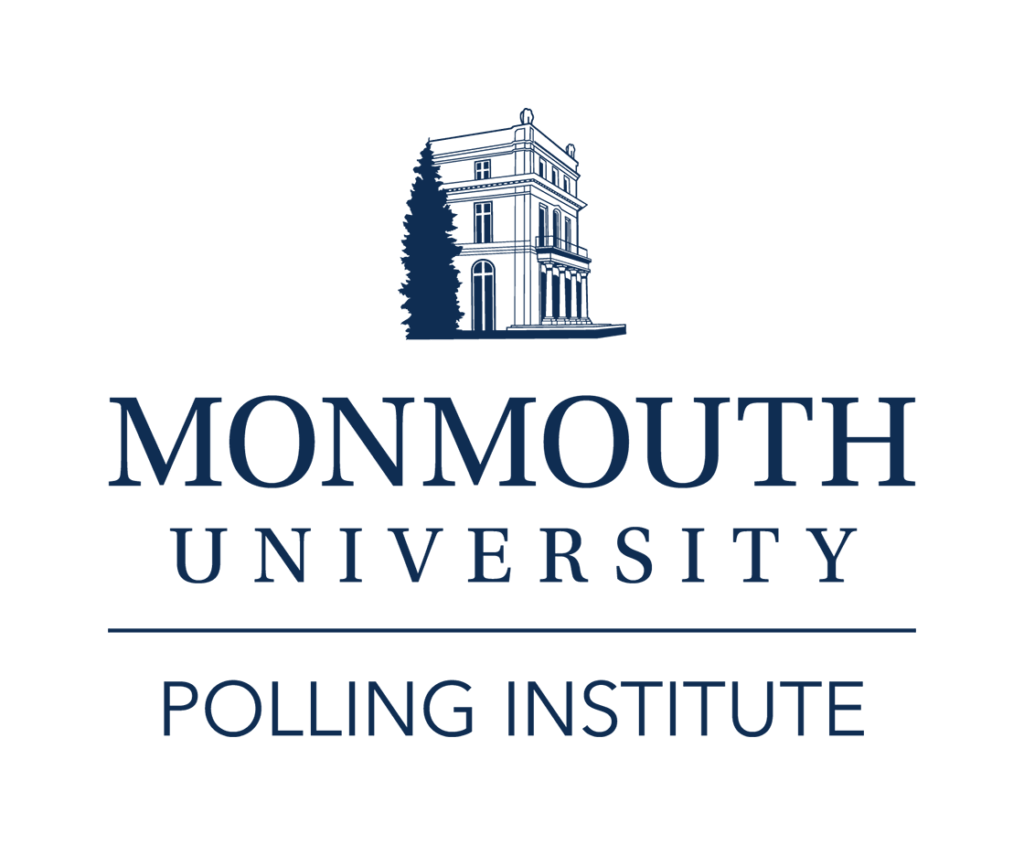I. Introduction
In order to assess New Jerseyans’ opinion on different school funding options, E3-Excellent Education for Everyone commissioned the Monmouth University Polling Institute to conduct an independent statewide survey of New Jersey residents.
The survey involved telephone interviews conducted between July 11 and 13, 2006 with a random probability sample of 802 New Jersey residents 18 years old and older. Percentages for this survey have a sampling error of ±3.5 percent at a 95 percent confidence level with 50/50 proportions. This report also describes findings for certain demographic groups in the population. Smaller sub-groups will have a higher margin of sampling error. A more comprehensive description of the research methodology is included in the appendix.
This report and the interpretation of the survey findings are the sole responsibility of the Monmouth University Polling Institute.
II. Survey Results
Public opinion on a general school voucher program in New Jersey currently stands at 54 percent who support it to 38 percent opposed (Table 1). Another 9 percent register no opinion. The statewide level of support is down somewhat from the 66 percent registered in 2003 and 60 percent in 2001 (Table 2). However, majority support for a voucher system in general is found across nearly every demographic group in the state, particularly among parents at 66 percent.
New Jerseyans show a strong willingness to test specific school choice programs. A current legislative proposal (A257/S1332) would set up an urban scholarship fund as a five-year pilot program. Low-income parents in select urban areas would be able to get scholarships from this fund to send their children to any private or public school participating in the program. The money for this program would come from voluntary contributions by New Jersey businesses. Any business that contributes to this fund would be able to take a credit on their state income taxes equal to the amount of their contribution.
An overwhelming 74 percent of New Jersey residents support the establishment of this urban scholarship pilot program. Only 20 percent are opposed and 6 percent register no opinion. Support for this plan is high among Democrats (80%), Republicans (74%) and independents (68%) alike (Table 1).
Another issue that is at the forefront of state education policy today is school funding formulas. Presently state school aid is given in a lump sum to each school district based on the cost of running the district. When asked whether the distribution of state educational funding should instead be based on an assessment of each individual student’s needs and “attached” to that student wherever he or she attends school, a majority of 54 percent say that this sounds like a good idea. Only 32 percent feel it is a bad idea and 14 percent express no opinion on this. Support comes from majorities in nearly every demographic group (Table 1).
All in all, the survey results indicate majority public support for school choice and alternate funding mechanisms in New Jersey.
APPENDIX:
SURVEY INSTRUMENT
(n=802)
1. Would you vote for or against a system of giving parents the option of using government-funded school vouchers to pay for tuition at the public, private or religious school of their choice?
54% For
38% Against
9% (VOL) Don’t know / Refused
2. Some people in New Jersey have proposed setting up an urban scholarship fund as a five-year pilot program. Low-income parents in select urban areas would be able to get scholarships from this fund to send their children to any private or public school participating in the program. The money for this program would come from voluntary contributions by New Jersey businesses. Any business that contributes to this fund would be able to take a credit on their state income taxes equal to the amount of their contribution. Would you support or oppose setting up this type of pilot program in New Jersey?
74% Support
20% Oppose
6% (VOL) Don’t know / Refused
3. The state is considering different ways to fund education in New Jersey. Presently state school aid is given in a lump sum to each school district based on the cost of running the district. However, some believe that the state’s share of local educational funding should be based on an assessment of each individual student’s needs, where a dollar amount is attached to each student and sent to whichever school he or she attends. In general, does changing state aid from a district-based to student-based formula sound like a good idea or bad idea to you?
54% Good idea
32% Bad idea
14% (VOL) Don’t know / Refused
SURVEY METHODOLOGY
The questionnaire for this survey was drafted by MUPI research staff in consultation with research concerns raised by the sponsor. The draft questionnaire was pretested with a random group of New Jersey residents and modifications were made to the survey instrument in order to increase the understandability and accuracy of the questions asked. MUPI retained final authority over question wording.
A random proportional probability sample was used to select the 802 New Jersey residents 18 years of age and older who were contacted to participate in this study. The sample was designed to make sure that each of six regions (defined by area code) and population gender were proportionately. The three digit exchange was used to match telephone numbers and geographic areas. The remaining four digits were randomly selected. This procedure insures that those with unlisted or new telephone numbers are included in the sample. Each working phone number was called a minimum of three times, at different times of the week, in an effort to reach people who were infrequently at home.
The study involved CATI interviews with a random probability sample of 802 New Jersey residents 18 years of age and older. The CATI interviews were conducted by telephone July 11 and 13, 2006 by experienced professional interviewers who were monitored by the MUPI research staff.
While those interviewed in a survey ideally will have the same characteristics as the population they represent, samples frequently may under-represent groups that are more difficult to interview, such as the elderly or those with less than a high school education. To correct this imbalance, a statistical technique known as “weighting” is used. The weighting procedure compares New Jersey population figures for age and education based on census data with those of the sample.
When there is significant difference between these two figures, the sample is weighted so it more accurately reflects the population of the state. For example, if census figures show 39 percent of New Jerseyans, 18 years and older, to have a high school education, and the sample consists of 32 percent with a high school education, each respondent in this category would be counted as 1.21 persons to adjust for this difference.
The percentages obtained in a sample survey are estimates of what the distribution of responses would be if the entire population had been surveyed. “Sampling error” is a statistical term which describes the probable difference between interviewing everyone in a given population and a sample drawn from that population. For example, the sampling error associated with a sample of this size is ±3.5 percent at a 95 percent confidence interval. Thus, if 47 percent in this sample are found to agree with a particular statement, the percentage of agreement within the population from which the sample was drawn would be between 43.5 and 50.5 percent (47 ±3.5%) 95 times out of 100.
Sampling error increases as the sample size is reduced. For example, if statements are made based on a sub-group of 600, the sampling error is ±4 percent. This fact must be kept in mind when comparing the responses of different groups within a sample (e.g. men compared with women). Readers should note that sampling error does not take into account other possible sources of error inherent in any study of public opinion. The following chart shows the relationship between sample size and sampling error.
|
Demographic Characteristics (n=802) | |||
|
Registered Voter |
Age | ||
|
76% |
Yes |
22% |
18 to 29 |
|
24 |
No |
40 |
30 to 49 |
|
20 |
50 to 64 | ||
|
Party Identification |
18 |
65 and older | |
|
37% |
Democrat | ||
|
41 |
Independent/Other |
Child in the home | |
|
22 |
Republican |
34% |
Yes |
|
66 |
No | ||
|
Gender | |||
|
46% |
Male |
Years in New Jersey | |
|
54 |
Female |
33% |
20 or less |
|
29 |
21 to 40 | ||
|
Education |
38 |
More than 40/entire life | |
|
48% |
High School or Less | ||
|
22 |
Some College |
Region of the State | |
|
30 |
College Grad |
45% |
North |
|
28 |
Central | ||
|
Race |
27 |
South | |
|
67% |
White, non-Hispanic | ||
|
33 |
Hispanic, Black, Asian, other |
Type of Municipality | |
|
10% |
Major Urban Center | ||
|
Family Income |
14 |
Other Urban Area | |
|
41% |
Under $50,000 |
38 |
Older Town & Suburb |
|
33 |
$50-99,999 |
32 |
Growing Suburb & Town |
|
26 |
$100,000 or more |
6 |
Rural Area |
___________________________________________________________________
STATEMENT FOR PUBLIC RELEASE OF DATA
Any public release of these data must include the following information in addition to the actual text of the questions in the survey instrument:
This survey was conducted by telephone from July 11 to 13, 2006 with a scientifically selected random sample of 802 New Jersey adults. The figures in this release are based on this sample size. All surveys are subject to sampling error, which is the expected probable difference between interviewing everyone in a population versus a scientific sampling drawn from that population. The sampling error is ± 3.5 percent, at a 95 percent confidence interval. Thus if 50 percent of New Jersey residents were found to think the state was in good economic condition, one would be 95 percent sure that the true figure would be between 46.5 and 53.5 percent (50 ± 3.5) had all New Jersey residents been interviewed, rather than just a sample. Sampling error increases as the sample size decreases, so statements based on various population subgroups, such as separate figures reported by race or age, are subject to more error than are statements based on the total sample. Sampling error does not take into account other sources of variation inherent in public opinion studies, such as non-response, question wording or context effects. The verbatim wording of all questions asked is reproduced in this memo. The sample has been stratified based on county and the data have been weighted on age and education to insure an accurate proportional representation of the state. This study was conducted by the Monmouth University Polling Institute.




